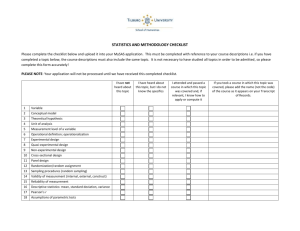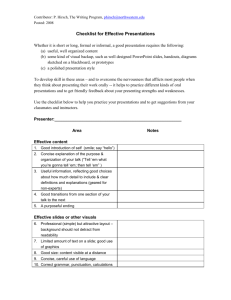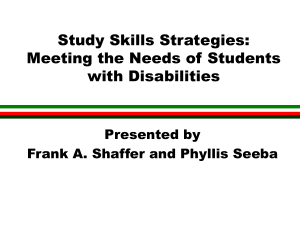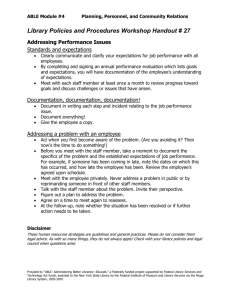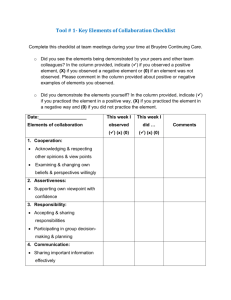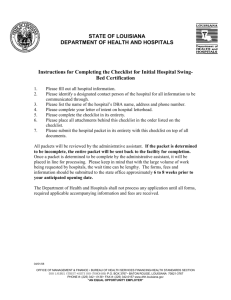Thinking Classroom Checklist: Fostering Critical Thinking
advertisement
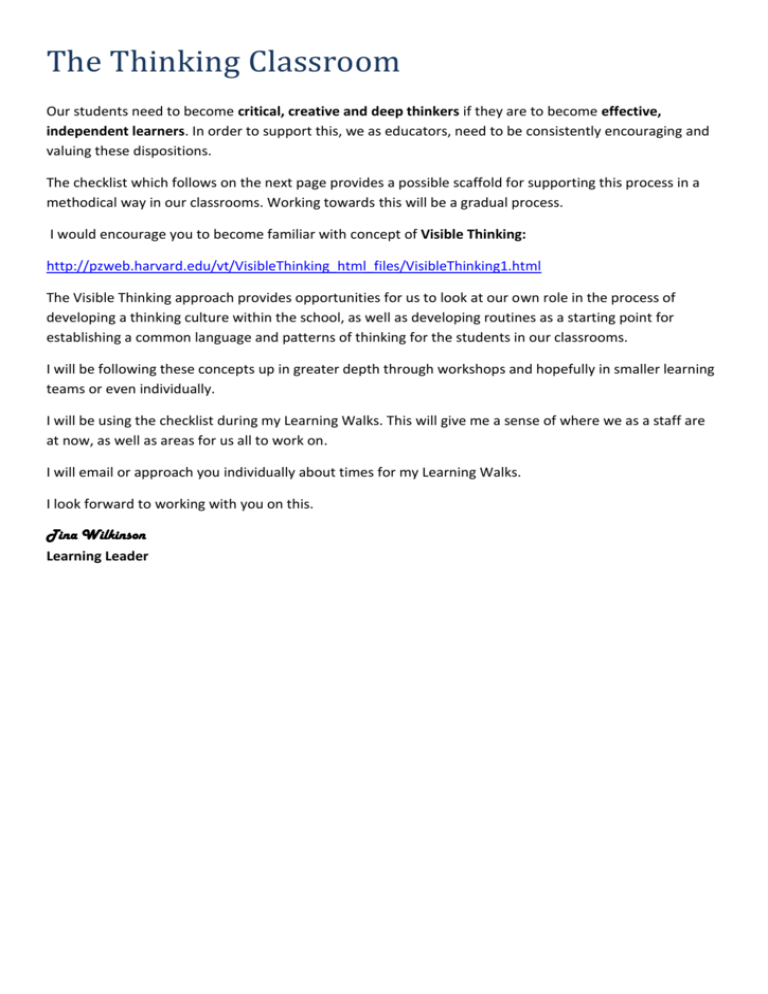
The Thinking Classroom Our students need to become critical, creative and deep thinkers if they are to become effective, independent learners. In order to support this, we as educators, need to be consistently encouraging and valuing these dispositions. The checklist which follows on the next page provides a possible scaffold for supporting this process in a methodical way in our classrooms. Working towards this will be a gradual process. I would encourage you to become familiar with concept of Visible Thinking: http://pzweb.harvard.edu/vt/VisibleThinking_html_files/VisibleThinking1.html The Visible Thinking approach provides opportunities for us to look at our own role in the process of developing a thinking culture within the school, as well as developing routines as a starting point for establishing a common language and patterns of thinking for the students in our classrooms. I will be following these concepts up in greater depth through workshops and hopefully in smaller learning teams or even individually. I will be using the checklist during my Learning Walks. This will give me a sense of where we as a staff are at now, as well as areas for us all to work on. I will email or approach you individually about times for my Learning Walks. I look forward to working with you on this. Tina Wilkinson Learning Leader The Thinking Classroom – a checklist In this classroom there is/are… Time for thinking for exploring topics in depth for formulating thoughtful responses Opportunities for thinking There are purposeful activities that require students to engage in thinking and thereby building their own understanding. Routine and Structure Students’ thinking is scaffolded. Students are provided with patterns and tools for thinking which can be used independently. Rating Comments low ______________ high low ______________ high low ______________ high a Language of Thinking A language of thinking is used consistently in the classroom. low ______________ high Modeling of Thinking The teacher’s own thinking is discussed, shared and made visible. low ______________ high Interactions and Relationships which: respect for and value one another’s ideas and thinking. Encourage a spirit of ongoing inquiry. low ______________ high a Physical Environment which: displays the process of thinking and development of ideas. is arranged to facilitate thoughtful interactions and collaboration. low ______________ high Expectations that learners will actively build understanding. thinking and learning will be valued as outcomes. low ______________ high Adapted from ideas presented in Intellectual Character: What it is, Why is Matters and How to Get It, by Ron Ritchard (2002)



![Assumptions Checklist [Word File]](http://s3.studylib.net/store/data/005860099_1-a66c5f4eb05ac40681dda51762a69619-300x300.png)


